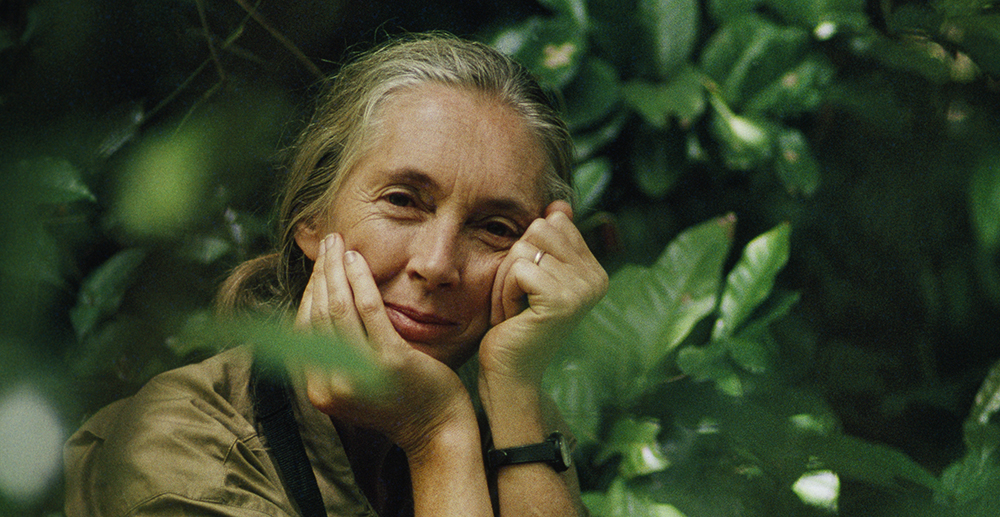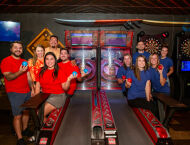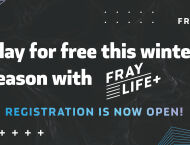Culture
 Photo: Michael Nichols
Photo: Michael Nichols
Becoming Jane: Nat Geo Shows the World Through Goodall’s Eyes, Ends With Call to Action
November 2, 2019 @ 12:00am
National Geographic Explorers – scientists, conservationists, educators and storytellers – have been responsible for unearthing and communicating some of the world’s greatest discoveries for more than 130 years. Among the most famous and beloved of these explorers is Jane Goodall, whose legacy is close to unrivaled when it comes to both scientific discovery and ongoing activism.
This year, while the 85-year-old Goodall continues to travel the world urging people to join the conservation movement, the National Geographic Society is partnering with the Jane Goodall Institute to honor her legacy and provide public engagement opportunities that align with Goodall’s mission.
“Becoming Jane,” which tells the story of the primatologist’s early years as an explorer, opens at the National Geographic Museum on November 22. The immersive exhibition will remain installed for 10 months before touring up to five additional cities around the country and then going international.
“Jane is such a beautiful example of a scientist who has made great contributions to knowledge, but is also so inspirational and impactful,” said Kathryn Keane, vice president of public experiences for the National Geographic Society and executive director of the National Geographic Museum. “She is really in some ways the perfect example of a National Geographic Explorer.”
Many people are familiar with Goodall’s work once she established herself as a primatologist and champion of chimpanzees. But Keane said for this exhibit, it was important to chronicle the whole journey from girlhood, animal-loving Goodall to the world-class researcher who changed our understanding of our closest living relatives to the activist she is today.
Visitors will enter the exhibit to a short overview film, then move through Goodall’s war-torn childhood and her 20s, when she wanted to move to Africa.
“For a 20-year-old woman in the late 1950s to be thinking about that was a radical idea – particularly a woman who didn’t have money or a lot of education,” Keane noted.
Items and images from the Jane Goodall Institute archives that have never been featured in films or books about Goodall will be on display. There will be a replica of the research tent complete with cots that Goodall spent her first intrepid months in – shared with her mother, who chaperoned the burgeoning scientist’s first expedition.
From there, visitors can interact with a hologram of Goodall before entering a 270-degree, 3-D immersive theater that will take them on a journey through Tanzania’s Gombe National Park. Entries from her journal reveal the story of her discovery of animal intelligence in real time. And of course, no Goodall exhibit would be complete without an opportunity to practice chimpanzee vocalizations.
“The following section is a bit darker,” Keane elaborated. “It brings us through the time when Jane realizes the world – and chimps – are in trouble. There is tension between what humans need and what animals need, and a big part of the mission at National Geographic is about finding ways to [reconcile this].”
Goodall made a stop in the District this September and spoke with urgency to two sold-out audiences at The Anthem.
“I’m trying to tell people what’s happening in the world and the mess we’ve made, and the fact that unless we all get together and take action soon, it may be too late,” she said. “The window of time is closing, and it’s not enough just to wave placards. We must take action.”
Fittingly, “Becoming Jane” ends with a call to action and pledge station. Keane says that this is an integral part of the exhibit because National Geographic’s goal is for people to come away from the experience not feeling overwhelmed by crisis, but rather empowered and encouraged to follow in Goodall’s footsteps.
When the primatologist spoke to DC audiences this fall, she humbly reinforced the power of teaching by doing and leading by example.
“There are some world leaders who are so caught up in feathering their own nests and pandering to big business [and] shareholders [that] we’re caught up in a vicious cycle of corruption and materialistic distance from the natural world,” Goodall explained. “The only way to get to anybody isn’t by shouting at them [or] getting angry. It’s by somehow finding a way to reach the heart.”
She also spoke to the simple path she took in her career: she was once just a young woman with a desire to learn about animals who became an icon by vehemently following her passion.
“I don’t think it’s that difficult if you know exactly what you want to do and you go ahead and do it – and you have the facts to back it up,” Goodall told the audience. “There’s a growing number of women who are doing things that were never done before, and those who succeed seem to be the ones who are really passionate about what they do. They’re not aggressive. They’re just gentle about it and prove by their actions and what they’ve done that they can do it. Don’t accept me because I’m a woman. Accept me because of the value of what I’ve done.”
But perhaps the most encouraging thing about Goodall is her capacity for hope. When asked how she maintains that hope in the face of all she has seen, she pointed to the individuals and communities who have taken their own personal pledges seriously – altering their own actions and taking advantage of programs and projects like those Goodall now sponsors to make broader impact.
The National Geographic exhibition will be augmented by educational programming, including dissemination of a weeklong science and conservation-oriented curriculum for teachers who are then invited to bring their students to the museum.
“One of our goals is to inspire the next Jane Goodall, to get people to understand these are fields that people can actually go into and we want to give kids an idea of the kind of careers that are possible,” Keane said. “That’s the kind of grassroots, viral approach to conservation that is ultimately going to work best.”
“Becoming Jane” opens at the National Geographic Museum on November 22. Tickets are $15. Learn more about the exhibit at www.nationalgeographic.org/events and the Jane Goodall Institute at www.janegoodall.org.
National Geographic Museum: 1145 17th St. NW, DC; 202-857-7700; www.nationalgeographic.org/events







